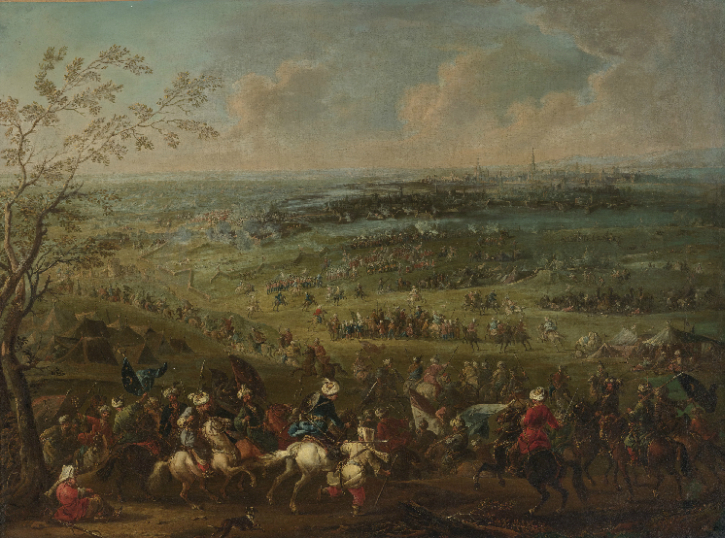 August Querfurt was born 13 years after the Battle of Vienna in 1683. The battle was the culmination of a two-month siege of the city by the Ottoman Empire. It lasted only 2 days and was won by the combined forces of the Holy Roman Empire and the Polish–Lithuanian Commonwealth (though the Lituanian forces would not arrive before the battle had ended).
August Querfurt was born 13 years after the Battle of Vienna in 1683. The battle was the culmination of a two-month siege of the city by the Ottoman Empire. It lasted only 2 days and was won by the combined forces of the Holy Roman Empire and the Polish–Lithuanian Commonwealth (though the Lituanian forces would not arrive before the battle had ended).
Some historians believe this battle marked the turning point of the 300 years-long war between the Holy Roman Empire and the Ottoman Empire. Some feel that the Turkish Empire was already crumbling and the battle simply provides evidence of their weakness. What makes this battle truly historic is that it is believed to be the largest cavalry charge in history.
In Querfurt’s depiction of the battle we see the scope of that cavalry charge. Lines of Turkish cavalry line the ridges as they attack the city. Vienna seems quite far away and the painting includes very little of the fighting. We see some smoke along the river but other than that, we only see the encampments and soldiers from the Ottoman Empire.
August Querfurt painted this military landscape in the 1750s and it measures 95.2 by 127.6 cm. It was sold by Sotheby’s in June of 2102 for $80,500 USD. Querfurt lived during a very turbulent time in history. His work documents much of the battles and military figures from that time. Unfortunately, there’s very little known about the artist himself. What I’ve found, I’ve included in our biography of August Querfurt.